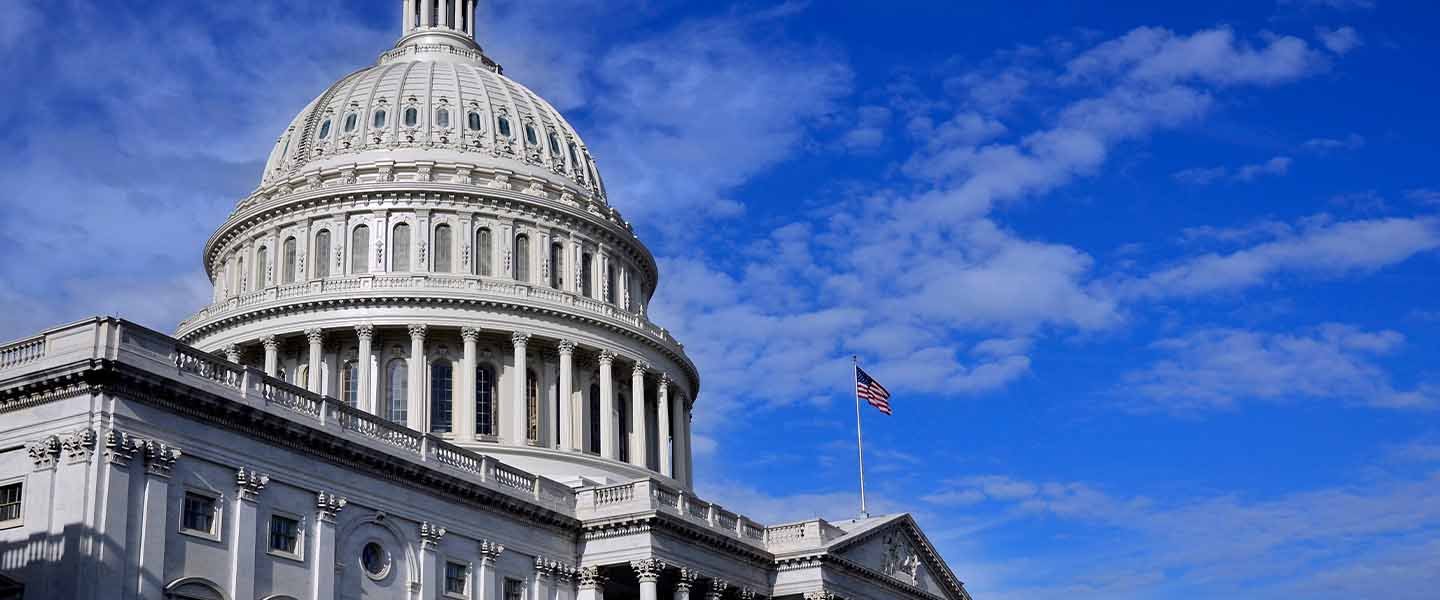-
Financial reporting and accounting advisory services
You trust your external auditor to deliver not only a high-quality, independent audit of your financial statements but to provide a range of support, including assessing material risks, evaluating internal controls and raising awareness around new and amended accounting standards.
-
Accounting Standards for Private Enterprises
Get the clear financial picture you need with the accounting standards team at Doane Grant Thornton LLP. Our experts have extensive experience with private enterprises of all sizes in all industries, an in-depth knowledge of today’s accounting standards, and are directly involved in the standard-setting process.
-
International Financial Reporting Standards
Whether you are already using IFRS or considering a transition to this global framework, Doane Grant Thornton LLP’s accounting standards team is here to help.
-
Accounting Standards for Not-for-Profit Organizations
From small, community organizations to large, national charities, you can count on Doane Grant Thornton LLP’s accounting standards team for in-depth knowledge and trusted advice.
-
Public Sector Accounting Standards
Working for a public-sector organization comes with a unique set of requirements for accounting and financial reporting. Doane Grant Thornton LLP’s accounting standards team has the practical, public-sector experience and in-depth knowledge you need.
-
Tax planning and compliance
Whether you are a private or public organization, your goal is to manage the critical aspects of tax compliance, and achieve the most effective results. At Doane Grant Thornton, we focus on delivering relevant advice, and providing an integrated planning approach to help you fulfill compliance obligations.
-
Research and development and government incentives
Are you developing innovative processes or products, undertaking experimentation or solving technological problems? If so, you may qualify to claim SR&ED tax credits. This Canadian federal government initiative is designed to encourage and support innovation in Canada. Our R&D professionals are a highly-trained, diverse team of practitioners that are engineers, scientists and specialized accountants.
-
Indirect tax
Keeping track of changes and developments in GST/HST, Quebec sales tax and other provincial sales taxes across Canada, can be a full-time job. The consequences for failing to adequately manage your organization’s sales tax obligations can be significant - from assessments, to forgone recoveries and cash flow implications, to customer or reputational risk.
-
US corporate tax
The United States has a very complex and regulated tax environment, that may undergo significant changes. Cross-border tax issues could become even more challenging for Canadian businesses looking for growth and prosperity in the biggest economy in the world.
-
Cross-border personal tax
In an increasingly flexible world, moving across the border may be more viable for Canadians and Americans; however, relocating may also have complex tax implications.
-
International tax
While there is great opportunity for businesses looking to expand globally, organizations are under increasing tax scrutiny. Regardless of your company’s size and level of international involvement—whether you’re working abroad, investing, buying and selling, borrowing or manufacturing—doing business beyond Canada’s borders comes with its fair share of tax risks.
-
Succession & estate planning
Like many private business owners today, you’ve spent your career building and running your business successfully. Now you’re faced with deciding on a successor—a successor who may or may not want your direct involvement and share your vision.
-
Tax Reporting & Advisory
The financial and tax reporting obligations of public markets and global tax authorities take significant resources and investment to manage. This requires calculating global tax provision estimates under US GAAP, IFRS, and other frameworks, and reconciling this reporting with tax compliance obligations.
-
Transfer pricing
Recognized as a leader in the transfer pricing community, our award-winning team can help you expand your business beyond borders with confidence.

-
Transactions
Our transactions group takes a client-centric, integrated approach, focused on helping you make and implement the best financial strategies. We offer meaningful, actionable and holistic advice to allow you to create value, manage risks and seize opportunities. It’s what we do best: help great organizations like yours grow and thrive.
-
Restructuring
We bring a wide range of services to both individuals and businesses – including shareholders, executives, directors, lenders, creditors and other advisors who are dealing with a corporation experiencing financial challenges.
-
Forensics
Market-driven expertise in investigation, dispute resolution and digital forensics
-
Cybersecurity
Viruses. Phishing. Malware infections. Malpractice by employees. Espionage. Data ransom and theft. Fraud. Cybercrime is now a leading risk to all businesses.
-
Consulting
Running a business is challenging and you need advice you can rely on at anytime you need it. Our team dives deep into your issues, looking holistically at your organization to understand your people, processes, and systems needs at the root of your pain points. The intersection of these three things is critical to develop the solutions you need today.
-
Creditor updates
Updates for creditors, limited partners, investors and shareholders.

-
Governance, risk and compliance
Effective, risk management—including governance and regulatory compliance—can lead to tangible, long-term business improvements. And be a source of significant competitive advantage.
-
Internal audit
Organizations thrive when they are constantly innovating, improving or creating new services and products and envisioning new markets and growth opportunities.
-
Certification – SOX
The corporate governance landscape is challenging at the best of times for public companies and their subsidiaries in Canada, the United States and around the world.
-
Third party assurance
Naturally, clients and stakeholders want reassurance that there are appropriate controls and safeguards over the data and processes being used to service their business. It’s critical.
-
 Assurance Important changes coming to AgriInvest in 2025AgriInvest is a business risk management program that helps agricultural producers manage small income declines and improve market income.
Assurance Important changes coming to AgriInvest in 2025AgriInvest is a business risk management program that helps agricultural producers manage small income declines and improve market income. -
 Tax alert Agricultural Clean Technology ProgramThe Agricultural Clean Technology Program will provide financial assistance to farmers and agri-businesses to help them reduce greenhouse gas (GHG) emissions.
Tax alert Agricultural Clean Technology ProgramThe Agricultural Clean Technology Program will provide financial assistance to farmers and agri-businesses to help them reduce greenhouse gas (GHG) emissions. -
 Tax alert ACT Program – Research and Innovation Stream explainedThe ACT Research and Innovation Stream provides financial support to organizations engaged in pre-market innovation.
Tax alert ACT Program – Research and Innovation Stream explainedThe ACT Research and Innovation Stream provides financial support to organizations engaged in pre-market innovation. -
 Tax alert ACT Program – Adoption Stream explainedThe ACT Adoption Stream provides non-repayable funding to help farmers and agri-business with the purchase and installation of clean technologies.
Tax alert ACT Program – Adoption Stream explainedThe ACT Adoption Stream provides non-repayable funding to help farmers and agri-business with the purchase and installation of clean technologies.
-
Builders And Developers
Every real estate project starts with a vision. We help builders and developers solidify that vision, transform it into reality, and create value.
-
Rental Property Owners And Occupiers
In today’s economic climate, it’s more important than ever to have a strong advisory partner on your side.
-
Real Estate Service Providers
Your company plays a key role in the success of landlords, investors and owners, but who is doing the same for you?

-
Mining
There’s no business quite like mining. It’s volatile, risky and complex – but the potential pay-off is huge. You’re not afraid of a challenge: the key is finding the right balance between risk and reward. Whether you’re a junior prospector, a senior producer, or somewhere in between, we’ll work with you to explore, discover and extract value at every stage of the mining process.
-
Oil & gas
The oil and gas industry is facing many complex challenges, beyond the price of oil. These include environmental issues, access to markets, growing competition from alternative energy sources and international markets, and a rapidly changing regulatory landscape, to name but a few.

Visit our hub to stay up to date on recent changes in the US and the economic impacts on Canadian businesses.
Updated: February 4, 2025
Canadian businesses are closely monitoring how US tax policies could shift under US President Donald Trump’s leadership. Given the interconnectedness of the Canadian and US economies, changes to US tax policies could have ripple effects on cross-border trade, investment, and the Canadian economy.
Potential tax policy changes
Business taxes
During his first administration, President Trump introduced significant tax reforms, including the Tax Cuts and Jobs Act (TCJA) of 2017. Key elements of this legislation, such as reducing the corporate income tax rate to 21% and creating incentives for repatriating foreign earnings, made the US an attractive destination for business investment. Some provisions of the TCJA are set to expire December 31, 2025, which could bring higher taxes for many Americans. It's plausible that in their second term, the Trump administration will seek to extend some elements, or introduce new measures, like their campaign proposal to further reduce the corporate income tax rates for businesses that make their products in the US. This could lead to new competitive pressures for Canadian businesses.
For example, additional reductions in corporate taxes or tax incentives for US manufacturers might encourage Canadian companies with US operations to expand south of the border. Conversely, firms without US exposure may find it harder to compete with American counterparts benefiting from a more favourable tax environment.
Impacts on Canadian tax policy
US tax changes often influence Canadian tax policy. If the US government implements significant tax cuts, Canada might face pressure to adjust its own corporate tax rates or introduce other incentives to remain competitive. Such adjustments could benefit Canadian businesses, but it would also depend on broader fiscal considerations.
Cross-border trade implications
As Canada and the US are each other’s closest international neighbours, with daily trade topping $3.6 billion, the imposition of tariffs from the US and Canada could hit the Canadian economy hard, squeezing margins for importers and exporters.
We’ll continue to monitor and keep you updated on the impacts of potential tariffs, as developments are ongoing.
See our tax alert on how new tariffs could affect Canadian businesses.
Impact on global tax policy
In one of many executive orders President Trump issued on January 20, 2025, he withdrew the United States from the Organization for Economic Cooperation and Development (OECD) Pillar One and Pillar Two proposals. He announced that a global corporate minimum tax deal "has no force or effect" in the US, pulling out of a global tax deal that includes nearly 140 other countries, including Canada.
Significant disruptions for taxpayers are unlikely, as the OECD framework remains closely aligned with many US tax principles. However, if the United States decides to lower its corporate tax rate further, it could create competitive challenges for Canada. In the past, aligning Canadian and US tax rates helped neutralize investment decisions, making Canada equally attractive to foreign investors. This highlights the need for a proactive strategy to ensure Canada can continue to compete for investment.
The US government has also proposed legislation based on a second executive order focused on an “America First Trade Policy”. This proposes a tax on US income earned by companies and individuals from foreign countries whose laws “discriminate against US citizens or companies” (e.g., a digital services tax (DST) or undertaxed payments rule). Canada enacted a DST in 2024 and plans to apply a UTPR starting December 31, 2024.
Economic impact
The proposal to lower US corporate tax rates could draw more foreign direct investment and encourage Canadian companies to relocate or expand in the US instead of at home. Additionally, lower US taxes could incentivize skilled workers and entrepreneurs to move south, further eroding Canada’s talent pool. As a result, Canada may struggle to maintain its economic appeal, particularly if its tax policies are perceived as less business-friendly in comparison. To remain competitive, Canada would need to counterbalance these changes by offering other incentives, such as new tax breaks or more robust infrastructure.
From a trade perspective, nearly 80% of Canada’s exports go to the US (representing roughly one-fifth of Canada’s GDP). Any changes to trade policies, like increased tariffs, could impact Canadian exports. In the energy sector, projects like the Keystone XL pipeline might see renewed support under the Trump administration, boosting Canada’s oil and gas industry. However, this could also lead to heightened criticism regarding environmental concerns, which may strain Canada’s domestic climate policies.
Plan ahead
While it remains uncertain what specific tax policies the new Trump administration will prioritize, Canadian businesses can take steps to prepare. We can help you develop cross-border tax strategies that will help your business remain competitive and ensure you and your business remain compliant as US tax legislation and policy evolves.
We’ll continue to monitor policy developments as they unfold to help you stay informed of changes. Check back for more insights and reach out to your local advisor today.





